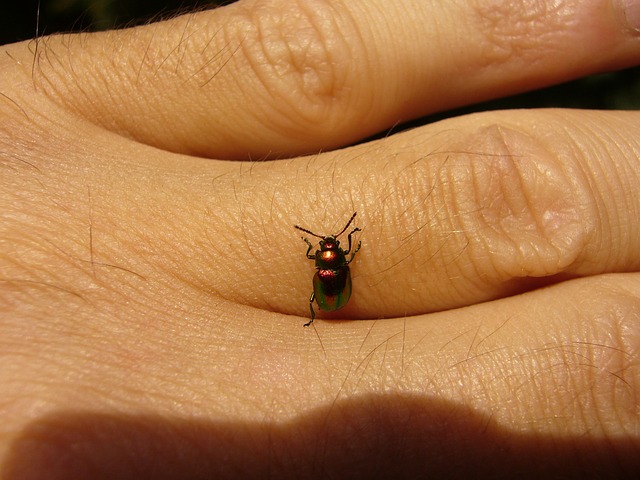- Calls to this hotline are currently being directed to Within Health or Eating Disorder Solutions
- Representatives are standing by 24/7 to help answer your questions
- All calls are confidential and HIPAA compliant
- There is no obligation or cost to call
- Eating Disorder Hope does not receive any commissions or fees dependent upon which provider you select
- Additional treatment providers are located on our directory or samhsa.gov
Anorexia & Obsessive Compulsive Disorder

Contributor: Nina Savelle-Rocklin, Psy.D.
Carly* was obsessed with what she called “safe” eating. She cut all food into ten pieces and ate sparingly, fearing her stomach would burst if she ate too much or that she’d choke. Extremely underweight, Carly recognized the improbability of her obsessions, yet was terrified to eat more.
She felt tormented by her fears and was convinced that she avoided catastrophe by restricting, which temporarily lessened the anxiety. Taylor was also underweight and obsessed with eating small portions. She counted each calorie and her rituals involved cutting everything into tiny pieces.
She carried a portable scale and weighed herself hourly. Taylor was euphoric when she lost weight, but was constantly terrified of gaining weight.
The Different Diagnoses
Carly was diagnosed with OCD (Obsessive Compulsive Disorder).
Taylor was diagnosed with AN (Anorexia Nervosa).
Why the different diagnoses? While both anorexia and OCD appear to share similarities, there are important differences:
Obsessions and Compulsions in OCD
OCD involves obsessions (thoughts) and compulsions (behaviors) that are ego dystonic, meaning unacceptable and inconsistent with one’s self-view. People with OCD recognize their obsessions are unreasonable and are dismayed by their compulsive actions.
Carly recognized her primary obsession about her stomach bursting was irrational. Her food rituals served as a way of managing this anxiety. Thus, her dangerously low weight was not a desired outcome, but the result of her obsessions and compulsions.
Obsessions and Compulsions in AN

For Taylor, her obsession with losing weight was reasonable; she thought concerned friends and family were overreacting. Like many anorexic patients, her obsessions and compulsions make sense to her (Mazure et al, 1994).
Taylor’s compulsive calorie counting, weigh-ins and food rituals all served her goal of losing weight.
What causes OCD and AN?
OCD is associated with anomalies in the brain (Mazure et al, 1994; Gillan 2014) and with unconscious conflict (Nemiah 1967; Meissner 2007). AN is generally thought to be a result of a complex interplay between psychological, biological, and environmental factors.
Recent studies point to the influence of the brain in compulsive behavior, yet it is reductionistic to focus solely on the brain as a causal factor.
As Grawe (2007) puts it, “Processes in our brains influence experiences, and conversely, experiences create processes in the brain.” The brain impacts the mind and vice versa.
Treatment Options
Both medication and therapy lead to change. Some people with OCD respond to medication and others do not. For anorexic patients, medication addresses co-occurring depression and/or anxiety. Those with anorexia often isolate, withdrawing from human connection and focusing on their bodies, and therapy remedies this.
Psychotherapy addresses underlying conflicts and creates changes in both mind and brain. Andreasen (2001) writes, “Psychotherapy… is in its own way as “biological” as the use of drugs. (p. 31).”
Regardless of what brings people to treatment, a safe therapeutic relationship offers a new experience, affecting the complex interplay of brain and mind, and leading to behavioral change.
References:
- Andreasen, N. C. (2001). Brave new brain: Conquering mental illness in the era of the genome. New York: Oxford University Press.
- Gillan, C. Apergis-Schoute Al, Morein-Zamir, S., Urcelay, G.P., Sule, A., Fineberg, N.A., Sahakian, B.J., Robbins, T.W. (2014). Functional neuroimaging of avoidance habits in OCD. American Journal of Psychiatry; Dec 2014
- Grawe, Klaus. (2007). Neuropsychotherapy: how the neurosciences inform effective psychotherapy. New York, NY: Psychology Press.
- Mazure, C., Halmi, K., Sunday, S., Romano, S., & Einhorn, A. (1994) The Yale-Brown-Cornell eating disorder scale: Development, use, reliability and validity. Journal of Psychiatric Research, 28, 425-445.
- Meissner, W.W. (2007). Mind, brain and self in psychoanalysis: Therapeutic implications of the mind-body relation. Psychoanalytic Psychology, 24:333-354.
- Nemiah, J.C. (1967). Obsessive-compulsive reaction. Comprehensive Textbook of Psychiatry. Eds. A. Freedman and H. Kaplan, pp. 912-928. Baltimore, MD: Williams & Wilkins
- Rice, E. (2004). Reflections on the obsessive-compulsive disorders: a psychodynamic and therapeutic perspective. Psychoanalytic Review, 91:23-24
*Names and identifying information have been changed
About the author:
Nina Savelle-Rocklin, Psy.D. is a Los Angeles-based psychoanalyst who specializes in weight, food and body image issues. She is a recognized expert on eating disorders, interviewed and quoted by the Los Angeles Times, Prevention, Real Simple, HuffPost and many other publications.
Dr. Nina writes an award-winning blog, Make Peace With Food, hosts a popular podcast, Win The Diet War with Dr. Nina, and can be seen on her YouTube video series, The Dr. Nina Show. She is currently writing a book for Rowman & Littlefield on the psychoanalytic treatment of eating disorders. For more information, please visit www.winthedietwar.com.
The opinions and views of our guest contributors are shared to provide a broad perspective of eating disorders. These are not necessarily the views of Eating Disorder Hope, but an effort to offer discussion of various issues by different concerned individuals.
Last Updated & Reviewed By: Jacquelyn Ekern, MS, LPC on January 1st, 2014
Published on EatingDisorderHope.com
